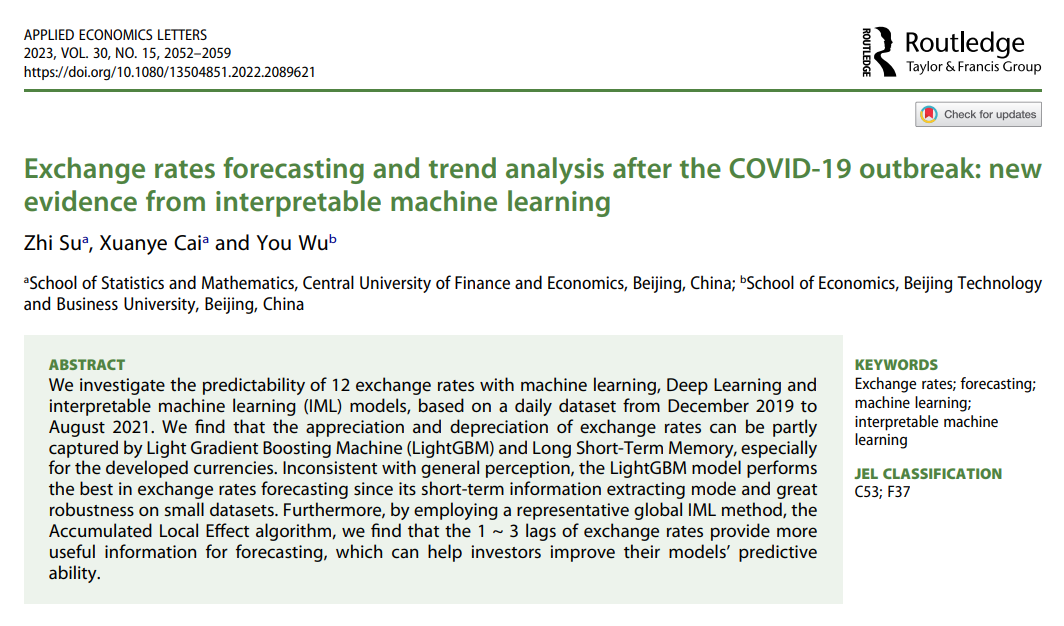
贸经系吴优博士论文在Applied Economics Letters发表

2023年6月,贸经系吴优博士的论文Exchange rates forecasting and trend analysis after the COVID-19 outbreak: New evidence from interpretable machine learning在Applied Economics Letters 2023年第30卷发表。Applied Economics Letters为北京工商大学认定的经济与商科ESI A3期刊。
1 内容摘要
We investigate the predictability of 12 exchange rates with machine learning, Deep Learning and interpretable machine learning (IML) models, based on a daily dataset from December 2019 to August 2021. We find that the appreciation and depreciation of exchange rates can be partly captured by Light Gradient Boosting Machine (LightGBM) and Long Short-Term Memory, especially for the developed currencies. Inconsistent with general perception, the LightGBM model performs the best in exchange rates forecasting since its short-term information extracting mode and great robustness on small datasets. Furthermore, by employing a representative global IML method, the Accumulated Local Effect algorithm, we find that the 1~3 lags of exchange rates provide more useful information for forecasting, which can help investors improve their models’ predictive ability.
本文基于2019年12月至2021年8月的日度数据集,利用机器学习、深度学习和可解释性机器学习 (IML) 模型研究了12种汇率的可预测性。结果发现,汇率升、贬值可以通过轻量梯度提升机算法(LightGBM)和长短期记忆模型来部分捕获,特别是针对发达国家(地区)的货币来说。与普遍看法不同的是,LightG3 原文链接BM模型由于其短期信息提取模式和对小数据集的强大鲁棒性,在汇率预测方面表现最好。此外,通过采用具有代表性的全局IML方法——累积局部效应算法,我们发现汇率的1~3阶滞后为预测提供了更多有用的信息,这可以帮助投资者提高模型的预测能力。
2 作者简介

3 原文链接
https://www.tandfonline.com/doi/full/10.1080/13504851.2022.2089621

